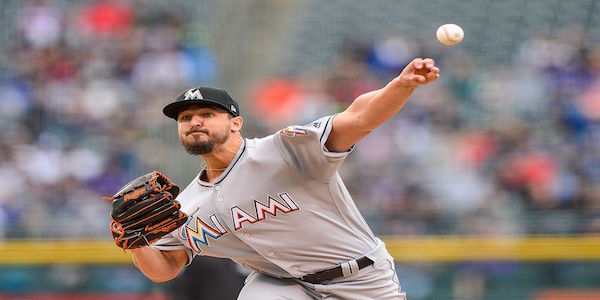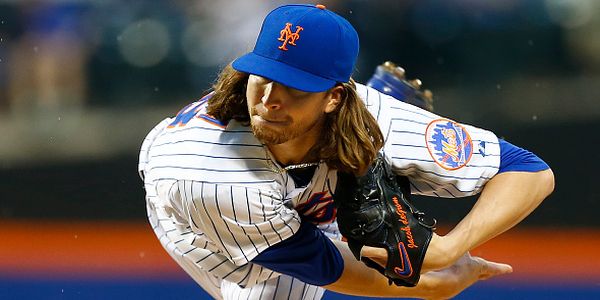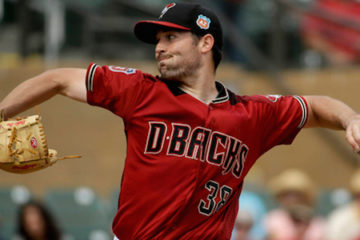Using K%+IFFB%-BB% To Target or Sell Starting Pitchers: April 30th Update

The fantasy baseball industry is lucky to have many analysts with interesting strategies up their sleeves to target players. One particular strategy I’ve enjoyed using over the years is K%+IFFB%-BB% to target pitchers. Strikeouts and the ability to induce easy pop ups is a recipe for fantasy success. During draft season I was targeting two of the top 20 hurlers along with a few of the middle relievers found atop of the K%+IFFB%-BB% list and some upside arms late. At this point, I’m using this strategy to monitor the market. Targeting arms with a lot of green on the chart and looking to sell or avoid arms with lots of red on the chart. For this exercise, I’ve included only qualified starters and plan on running the relievers exercise tomorrow.
Additionally, I always like to give credit when credit is due. I was definitely not the first to use this, I’ve tweeted about my use of this strategy back in 2016, Jeff Zimmermann wrote about it here and per his discussion, I believe Rob Silver has been using this for a significant period of time (he may be the first!). Zimmermann expands on this strategy and probably makes the math more sound by placing PAs in the denominator. I encourage you to read more of his discussion and reasoning in the previous link. Additionally, I posted last year’s version of this research as well as preseason 2019 research on the site as well (same topic/parameters, different data leading us to a few different names to target). Many thanks to our friends at FanGraphs and Baseball Savant for the data.
It’s important to note that I arbitrarily decided to focus on starters that had no more than two sources of data that fell outside of our green target area. Do yourself a favor and do a through scan of the chart at the bottom of this post to absorb as much as you feel necessary.
New names that popped to target or hold:
Caleb Smith | Marlins
Smith may be new around these parts but he’s been an early season favorite among many fantasy baseball enthusiasts throughout the industry – and rightfully so. Lots of green on the chart to display his early season success. The southpaw’s ERA sits slightly below his FIP/xFIP, so should there be some regression in that category it shouldn’t fall far. The SwStr% and K% are excellent and align nicely, leading me to believe he can maintain these efforts. He’s inducing a ton of weak contact via the IFFB% (14.8% – top 10 among qualified starters) and limiting walks (6.4% BB%) paving the way for a top three finish on this chart through his six starts.
Caleb Smith is also a Statcast darling. He’s limiting opponents to an average exit velocity of 83.4 MPH, good enough to spot him among the top 5% hurlers in baseball. Additionally, his hard hit rate allowed is only 21.5% which places him among the top 4% of MLB arms. The only knock on Smith could be the expected lack of wins playing for the Marlins. But a three-pitch mix yielding three-to-four category production is super impressive and he should be owned universally. At the moment, Smith is still available in roughly 30% of Y! formats and is a buy high candidate.
Matthew Boyd | Tigers
True story: I was sitting at my kitchen table analyzing a friend’s fantasy baseball team per his request. He reeled in a late share of Matthew Boyd to which I said “why?” A month later here we are talking about how impressive the start of the season has been for Boyd and I’m still scratching my head trying to figure out what exactly I missed on him. But I did. I missed on Boyd. Sorry, Jimmy – I’m glad you held on.
Boyd popped at sixth overall on the chart with green lights throughout. In six starts Boyd’s ERA sits at 3.13 but FIP leads us to believe that he’s been better than that and could continue to improve going forward. Elite strikeout rates backed up by elite swinging-strike rates tell us his early season strikeout rates could power on. He and Caleb Smith are eerily similar in that they’ve produced similarly through April and play for teams that may not provide many opportunities to rack up wins. Statcast doesn’t love Boyd as much as Smith, though, but that shouldn’t be a big knock on the fellow southpaw. Boyd is still available in more than 20% of Y! leagues and I would be willing to buy high on him as well.
Some other that stand out:
Luke Weaver of the Diamondbacks gets lightly dinged by the chart in the WHIP/ERA categories. FIP believes he’s due for some improvement going forward, though. Nice strikeout rates paired with an ability to induce weak contact via the IFFB and limiting walks lead Weaver to a top 10 finish on the chart. He’ll be on the rise in my upcoming rest of season rankings update. The Dbacks right-hander is available in 50% of Y! formats.
The chart loves Ross Stripling of the Dodgers. Green most of the way through with slight blemishes in the win department — but we know how useful that metric is at this point. The Dodgers always seem to be shuffling their staff around so owning (many of) them is a roll of the dice, but I’d rather have shares and than not. He’s available in close to 30% of Y! leagues.
Even with getting dinged in the xFIP and K% columns, Trevor Williams jumps off the chart with a top-20 placement through April. Williams induces the third-most weak contact via the IFFB on the chart and surrenders the sixth-fewest free passes among qualified arms on the chart as well. These particular strengths vault him on up. More strikeouts would be ideal, but I’m still targeting him where possible. Available in 45% of Y! leagues.
Standing out for the wrong reasons:
Zack Godley of the Diamondbacks is off to a rough start to the season. So much red on the chart it hurts your eyes. Rumors have been swirling regarding the security of his rotation spot in Arizona as of late. You won’t be able to trade Godley at this time, but don’t feel bad cutting bait to take advantage of some early rising arms.
My chart hates Jake Arrieta. ERA and WHIP are the only data sets keeping the former “quasi-ace” from being in all red, but even those are in the danger zone. His 90 MPH average exit velocity and 40.4% Hard Hit% to date are career worsts for Arrieta by a decent margin. One has to believe history, name recognition and playing on the Phillies leads to his 84% ownership in Y! leagues, but I would have no problems dropping him in 12-teamers should there be a newer, shinier option on the wire.
2018 seems like so long ago for Miles Mikolas and those with shares. But this is not something many missed on, either. Low strikeout totals scared some folks off despite the win totals because people are smart – they understand many random variables are baked into the win category. He still does a nice job at limiting walks resulting in a fair WHIP, but if that’s the best we can say about someone who you were hoping to be a No. 2 or No. 3 fantasy starter we may need to consider moving on. The Cardinals righty is currently owned in 81% of Y! leagues, about 50% too many. Cut bait in 12s if you can afford it.
Some may or may not be surprised that Corey Kluber popped on the chart for the wrong reasons. The K% and SwStr% support each other, but that’s about the best we can say at this point. We’re staring at career worsts in wOBA (.358), Hard Hit% (37.9%), K% (23.8%) and BB% (10.2%). ERA-FIP (5.81-4.19) seems to think there are better days ahead, but the lack of elite strikeouts and ability to induce weak contact make me want to move on. You should be able to get .80 cents or more on the dollar should you float his name via trades simply for his track record. If you could do that, I would.
Yu Darvish and Aaron Nola popped for all the wrong reasons as well…I think it’s fair to say we can start to worry.
There are many more to talk about, so take a look at the chart and pop questions in the comments or shoot them to me on Twitter to discuss.
The reliever compliment to this exercise will run tomorrow on the site.
Here’s a direct link to the chart, but it should also be embedded below. If you have any questions, pop them in the comments or hit me on the Twitter machine and I’ll gladly respond.
The K%+IFFB%-BB% Chart:




